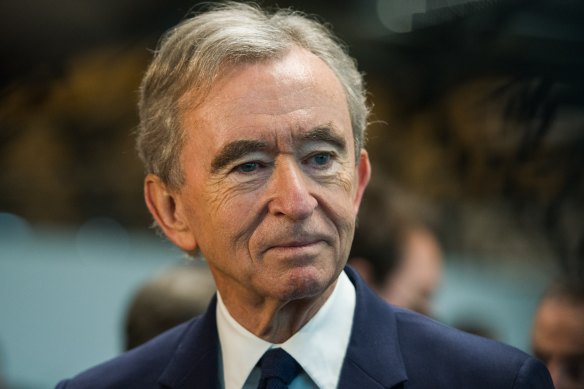
Awe, anger, disdain, envy and concern – these about cover off on the responses to the annual publication of the Forbes list of the world’s most colossal fortunes, owned by the elite group of 2781 who count themselves members of the billionaires club.
And as the saying goes, the rich have gotten richer over the past year. They have increased their collective wealth by $US2 trillion ($3.1 trillion) since 2023 to $US14.2 trillion. To put this into perspective, this is larger than the gross domestic product of any country other than the US and China.

Bernard Arnault, the French luxury magnate who runs LVMH, tops the list. Credit: Bloomberg
It’s been a particularly good year for those at the pinnacle, with the top 20 names having added a combined $US700 billion to their coffers, thanks in large part to the strong sharemarket returns and booming growth in AI-related technology stocks. More than a dozen new AI-related billionaires joined the list, including Sam Altman, the chief executive of OpenAI. Global pop sensation Taylor Swift also joined their ranks, with her fortune hitting $US1.1 billion.
The No.1 spot is held by Bernard Arnault, the majority owner of the luxury goods conglomerate LVMH, whose fortune, Forbes calculates, has increased by 10 per cent to $US233 billion. Elon Musk is in second place with $US195 billion, up 8 per cent on last year.
It has been a particularly alarming year in terms of the disparity between the mega rich and the struggling poor.
Loading
The concentration of the world’s wealth is no cause for celebration and presents an enormous geopolitical challenge, as the division between rich and poor brings with it extreme social and economic risks.
If current trends continue, the world will have its first trillionaire within a decade, according to a recent Oxfam report on global inequality.









 Add Category
Add Category